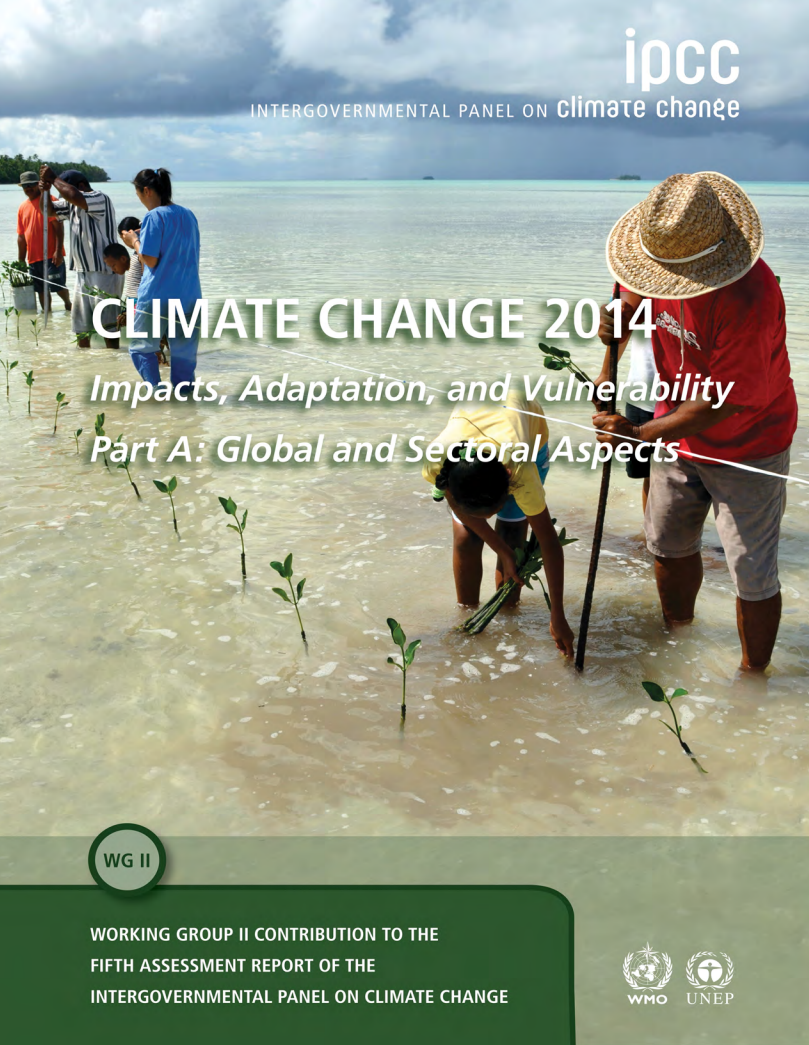Resource information
Climate change impacts, adaptation, and vulnerability span a vast range of topics.With the deepening of knowledge about climate change, we see connections in expanding and diverse areas, activities, and assets at risk. Early research focused on direct impacts of temperature and rainfall on humans, crops, and wild plants and animals. New evidence points to the importance of understanding not only these direct impacts but also potential indirect impacts, including impacts that can be transmitted around the world through trade, travel, and security. As a consequence, few aspects of the human endeavor or of natural ecosystem processes are isolated from possible impacts in a changing climate. The interconnectedness of the Earth system makes it impossible to draw a confined boundary around climate change impacts, adaptation, and vulnerability. This report does not attempt to bound the issue. Instead, it focuses on core elements and identifies connecting points where the issue of climate change overlaps with or merges into other issues.
The integrative nature of the climate change issue underlies three major new elements of the WGII contribution to the AR5. The first is explicit coverage of a larger range of topics, with new chapters. Increasing knowledge, expressed in a rapidly growing corpus of published literature, enables deeper assessment in a number of areas. Some of these are geographic, especially the addition of two chapters on oceans. Other new chapters further develop topics covered in earlier assessments, reflecting the increased sophistication of the available research. Expanded coverage of human settlements, security, and livelihoods builds on new research concerning human dimensions of climate change. A large increase in the published literature on adaptation motivates assessment in a suite of chapters.
A second new emphasis is the focus on climate change as a challenge in managing and reducing risk, as well as capitalizing on opportunities. There are several advantages to understanding the risk of impacts from climate change asresulting from the overlap of hazardsfrom the physical climate and the vulnerability and exposure of people, ecosystems, and assets. Some of the advantages accrue from the opportunity to evaluate factors that regulate each component of risk. Others relate to the way that a focus on risk can clarify bridges to solutions. A focus on risk can link historical experience with future projections. It helps integrate the role of extremes. And it highlights the importance of considering the full range of possible outcomes, while opening the door to a range of tools relevant to decision making under uncertainty.
A third new emphasis ties together the interconnectedness of climate change with a focus on risk. Risks of climate change unfold in environments with many interacting processes and stressors. Often, climate change acts mainly through adding new dimensions and complications to sometimes longstanding challenges.Appreciating the multi-stressor context of the risks of climate change can open doors to new insights and approaches for solutions.
Increased knowledge of the risks of climate change can be a starting point for understanding the opportunitiesfor and implications of possible solutions. Some of the solution space is in the domain of mitigation, extensively covered by the Working Group III contribution to the AR5. TheWGIIAR5 delves deep into adaptation. But many opportunities exist in linking climate change adaptation, mitigation, and sustainable development. In contrast to past literature that tended to characterize adaptation, mitigation, and sustainable development as competing agendas, new literature identifies complementarities. It shines light on options for leveraging investments in managing and reducing the risks of climate change to enable vibrant communities, robust economies, and healthy ecosystems, in all parts of the world.


